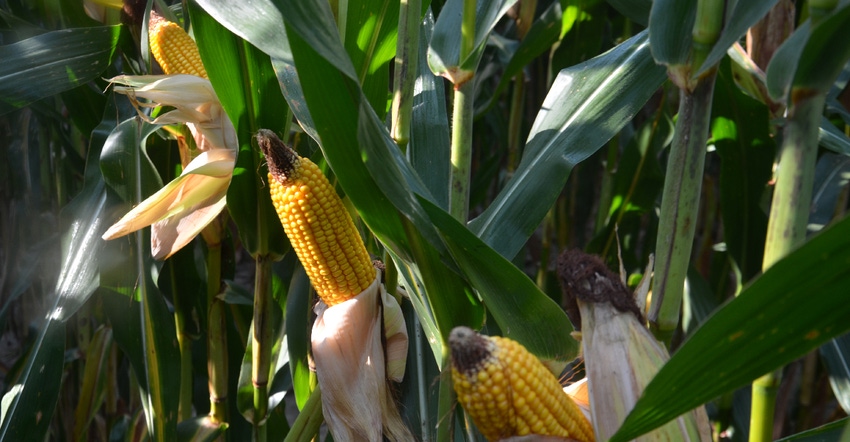
The Corn Watch ’20 field yielded 221 bushels per acre, despite issues with spotty stands in part of the field and damage from trees and wildlife along one border. While this field received adequate rainfall during the critical pollination period, could yields have been higher if it had received one more rain during grain fill? Or perhaps if temperatures were a few degrees cooler during that stage?
“We found many ears with an inch or more of bare tip, and in many cases, kernels had started to form and aborted,” says Dave Nanda, director of genetics for Seed Genetics Direct. “The abortion wasn’t consistent, and many ears were filled out with few, if any, aborted tip kernels. Yet, you wonder what the yield might have been if environmental conditions were better. Or if we could have figured out how to reduce stress at the right time when plants were making important decisions about whether to abort kernels.”
Do the yield math
Here are some examples that illustrate what a few extra kernels per ear might have meant, if every ear in the field had these extra kernels. These examples are based on calculations using the corn yield estimation formula in the Purdue University Corn and Soybean Field Guide.
The formula uses a “fudge factor,” which represents number of kernels per bushel. Because both hybrids in the field had relatively large kernels, 85 will be the fudge factor, representing 85,000 kernels per bushel. Originally, agronomists used 90 as the fudge factor, but many use lower numbers for modern hybrids.
The formula is based on 1/1,000 of an acre. The formula is: Number of ears times number of rows of kernels per ear times number of kernels per row, with the resulting number divided by the fudge factor.
Example 1. Suppose there are 30 ears in 1/1,000 of an acre, and five ears pulled at random average 18 rows of kernels per ear. They average 32 kernels per row.
The math is: 30 x 18 x 32 = 17,280 / 85 = 203.3 bushels per acre, at 15.5% moisture.
Example 2. Assume all variables are the same, Nanda says, except there is one more kernel per row on each ear. One less kernel aborted. The new number is 33 kernels per row.
Now, the math is: 30 x 18 x 33 = 17,820 / 85 = 209.6 bushels per acre. Picking up just one kernel per row of kernels per ear, or 18 kernels per ear, increased yield by more than 6 bushels per acre.
Example 3. Now, assume all variables stay the same, except fewer kernels aborted because environmental conditions were better. The average number of kernels per row increases to 36. There are still 30 ears per 1/1,000 acre, and each ear averages 18 rows of kernels per ear.
The new math is: 30 x 18 x 36 = 19,440 / 85 = 228.7 bushels per acre. Adding four more kernels per row on each ear, from 32 kernels in the first example to 36 kernels in this example, increased yield by more than 25 bushels per acre.
“Each kernel that you can keep from aborting is critical to better yield,” Nanda concludes.
About the Author(s)
You May Also Like




